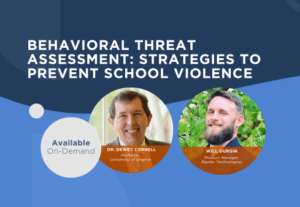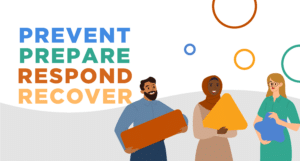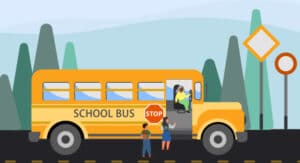Listen to this blog
4 minutes
“Safety and security has to be holistic. It has to be so much more than just building security. It has to be so much more than making sure you go out to drill.” Hutto, TX Police Chief Yarbrough, founder of the Community SAFE Project
The community network that makes up a student’s care system includes school resources, social work, and the police—but there are gaps in this support system. When information about a student’s distress slips through the cracks in the system and their needs go undetected, it leaves them inadequately supported and struggling to make choices that lead to a healthy, productive life.
So, how do we detect and share the information we’re missing so we can better redirect them back to a positive path?
The SAFE Project and Continuity of Care
The SAFE Project, founded by Hutto, TX Police Chief Jeff Yarbrough, works to help close these gaps in student care as well as to encourage safety awareness throughout Hutto. His four pillars of continuity of care include the following:
1. Safety and Security
Through the SAFE Project, Yarbrough helps train area schools, churches, and businesses in the following:
- Facility Safety Planning
- Standard Emergency Response Protocols
- Safety Drill Support
But Yarbrough maintains that school safety and security is only the first step to the total continuity of care that gives students the support and resources they need to be safe, healthy, and successful.
2. Behavioral Health
The Behavioral Health pillar encourages caretakers—schools, social workers, and police as well as parents—to ask: Is the student acting out because of distress?
Children lack the tools they need to respond to stressful situations in healthy ways, and their behaviors are often written off as “bad” or even “criminal” when they actually are a child’s call for help. Recognizing these needs and connecting the student with the appropriate expert to support them is critical—as is maintaining continuity of care following the initial event.
Early intervention—the most important and effective way to support a student who may be experiencing challenges they are not equipped to manage—reduces the child’s exposure to harm and gives them the support they need to cope and heal.
3. Educational Equity
Having educational equity means each student receives the resources and support they need to succeed. Identifying where a student’s needs are and meeting them there allows schools to support their students with the resources they need on an individual level.
4. Student Advocacy
Communicating student experiences and needs throughout the student support system helps mitigate the impact of a student’s distress; the end goal of student advocacy is to help keep students from paying for the rest of their lives for what they did as a child.
When the appropriate caregivers communicate about a student’s low-level concerns—that is, minor concerns a staff member may have about a student’s behavior that might include irregular attendance, outbursts or meltdowns, unexplained bruising, new slang, appearing unkempt/disheveled, food insecurity, withdrawal, or more—that student receives the support and tools they need to heal.
Using Raptor StudentSafe to support your students
Raptor StudentSafe Software includes the ability to document and manage low-level concerns, allowing schools to make sure students in crisis are connected with the resources and solutions they need to thrive—drastically reducing student threats of harm to self and others.
Talk to a specialist to learn more about StudentSafe.
Related Resources
Guide to K-12 Student Wellbeing
Strategies to Recognize, Document, and Support Students in Distress
Listen to this blog
4 minutes








